Expect Little Drama in Oklahoma’s 2026 Federal Elections
Sooner Survey: Volume 36 No. 2 | May 27, 2025
By Pat McFerron, President
Cole Hargrave Snodgrass & Associate
![]() @McFerron
@McFerron
Only three Democrats have held federal office in Oklahoma this century. Put another way, out of the 175 office-holder years (seven seats for 25 years each) only 14 of those years have been filled by Democrats, and those seats are not the same today as they were when they were held by Democrats. Congressional District 2 has transformed from the most Democratic leaning seat in the state when Brad Carson and Dan Boren held that position, to the most Republican without a single Democrat representing any portion of it in the state legislature. Furthermore, CD-5 substantially changed through redistricting since Kendra Horn’s two-year reign and is now among a very solidly Republican seat (Trump defeated Harris by 18-points in 2024 in CD-5). Similarly, generic ballots show that throughout the state, Republican candidates hold sizeable leads over Democrats, so any contest for federal office is going to be decided in the Republican primary. As such, this study looks only at Republican primary voters.
Buoyed by an increasingly stronger Donald Trump, Senator Markwayne Mullin is well on his way to being elected to a full-term as U.S. Senator. Similarly, the congressional District members all have exceptional favorability numbers with the most recent member, Josh Brecheen falling a bit behind the others because he is not quite as well known.
Donald Trump sets a very high bar among Oklahoma Republicans. Not only does Trump sit at 84% favorable among Sooner-State Republicans, but 71% characterize their impression of him as “strongly favorable”. Only 13% of the state’s Republicans have an unfavorable impression of the Commander-in-Chief. While Trump has had positive numbers in the state dating back to when he secured the GOP nomination in 2016, his number had taken a hit in 2023 when we saw him at 69% favorable, 25% unfavorable.
Since retaking office, Trump’s numbers have so improved that more Oklahoma Republicans self-identify as “Trump Republicans” (48%) than as a Traditional Republican (44%). This is a sizeable shift from July of 2024 when only 38% of Republicans said they were Trump Republicans and 55% claimed the Traditional label. To be clear, even among Traditional Republicans, Trump is still viewed in an overwhelmingly positive manner (68% favorable / 29% unfavorable).
This study was concluded prior to Trump’s recent endorsement of Mullin, yet there was still no doubt that they have been seen by Oklahoma Republicans as working together. As such, it is no wonder that Mullin’s overall favorable is a +50 (68% favorable / 18% unfavorable) and he does exceptionally well among Trump Republicans (81% favorable / 7% unfavorable) while still approaching a 2-to-1 positive among Traditional Republicans (57% favorable / 30% unfavorable). Mullin does perform a little better in rural counties (73% favorable / 14% unfavorable) than in the two metro areas (62% favorable / 24% unfavorable) but those metro numbers are still impressive. He has a real base on the eastern side of the state and does exceptionally well among those over 65 years of age (75% favorable / 14% unfavorable) who will likely constitute close to half of those voting in a Republican primary.
Mullin’s reelect numbers are equally as strong and something not often seen. Fully 57% of Oklahoma Republicans say Mullin deserves to be reelected while just half that (29%) say someone new deserves a chance. This is known as the “hard reelect” because it presupposes the perfect alternative candidate, and even in that instance, Mullin is well north of 50% and clearly in safe territory. Mullin’s reelect tops 60% among the most frequent primary election participants and is 66% among those over 65 years of age. Setting Mullin a bit apart from other Republicans is how well he does among social media users, including a 69% reelect among those using Truth Social and 58% among those on X (formerly Twitter).
While the cell sizes are small, we also looked at the favorability of the incumbent Republican members of Congress in their districts, and this too shows great strength among the Republican delegation, with the one exception possibly being Congressman Josh Brecheen who is simply not as well-known as the other incumbents.
The most well-known member of Congress within their own district is Tom Cole who has hard name-recognition of 90% (71% favorable / 19% unfavorable). Right behind him are Kevin Hern (85% hard name-recognition; 68% favorable / 17% unfavorable) Stephanie Bice (82% hard name-recognition; 58% favorable / 24% unfavorable) and Frank Lucas (75% hard name-recognition; 61% favorable / 14% unfavorable). Josh Brecheens’ hard name recognition is only 56% and 28% of Republicans in CD-2 do not even recall hearing his name. While his favorable is under 50% (49%), his unfavorable is also low at 7%, so his 7-to-1 ratio is considered very solid. Still, the rest of the delegation is substantially more defined than is Brecheen.
All of the strong favorable ratings make it unlikely any of the federal candidates will be vulnerable in 2026. Storms can occur, however, so each candidate should be diligent and understand this pro-Trump environment among Oklahoma Republicans. ◊


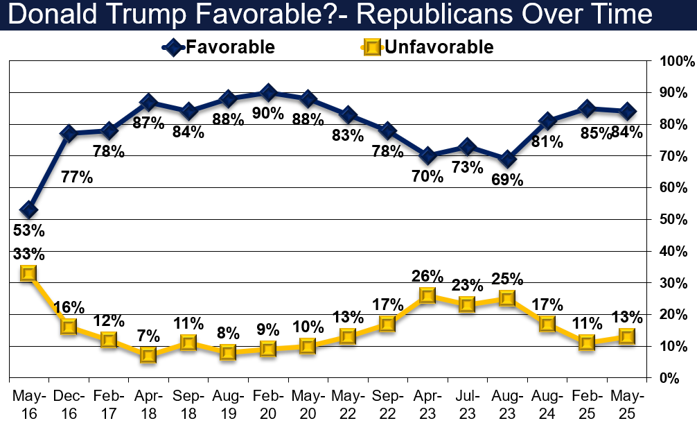
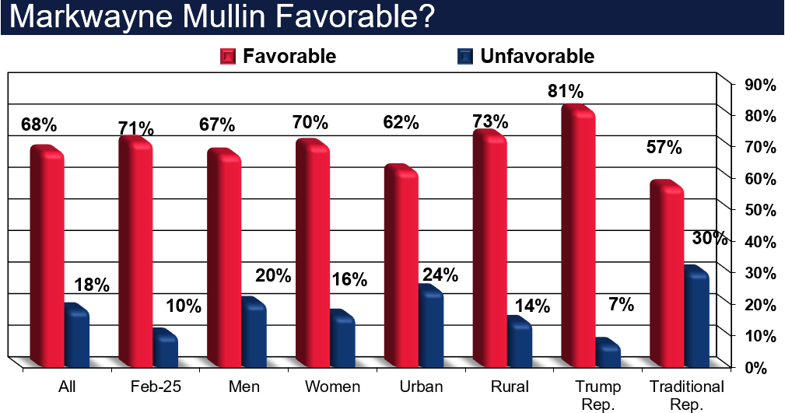
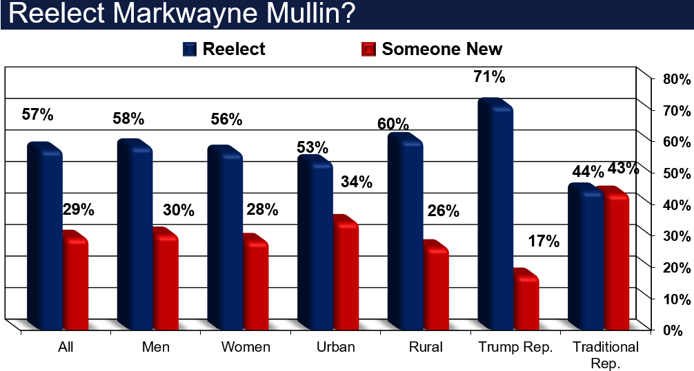
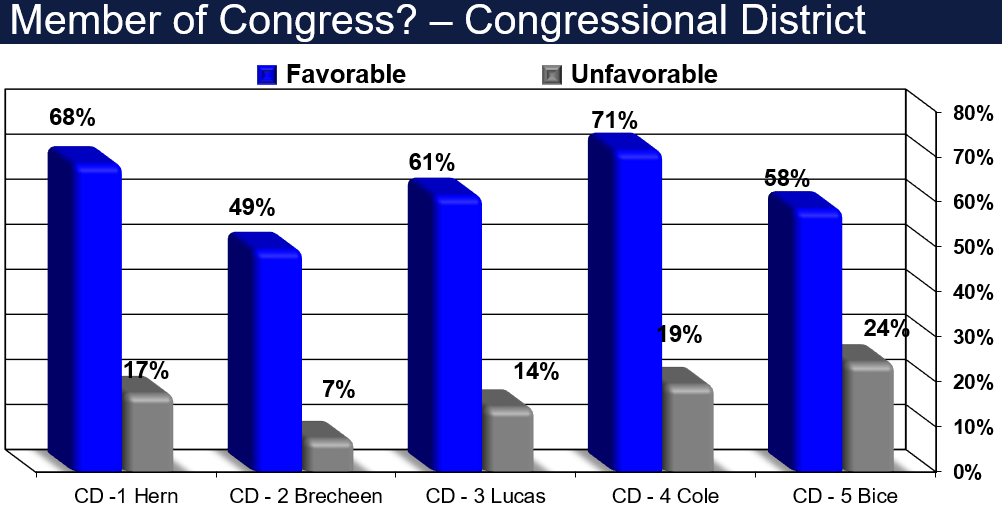

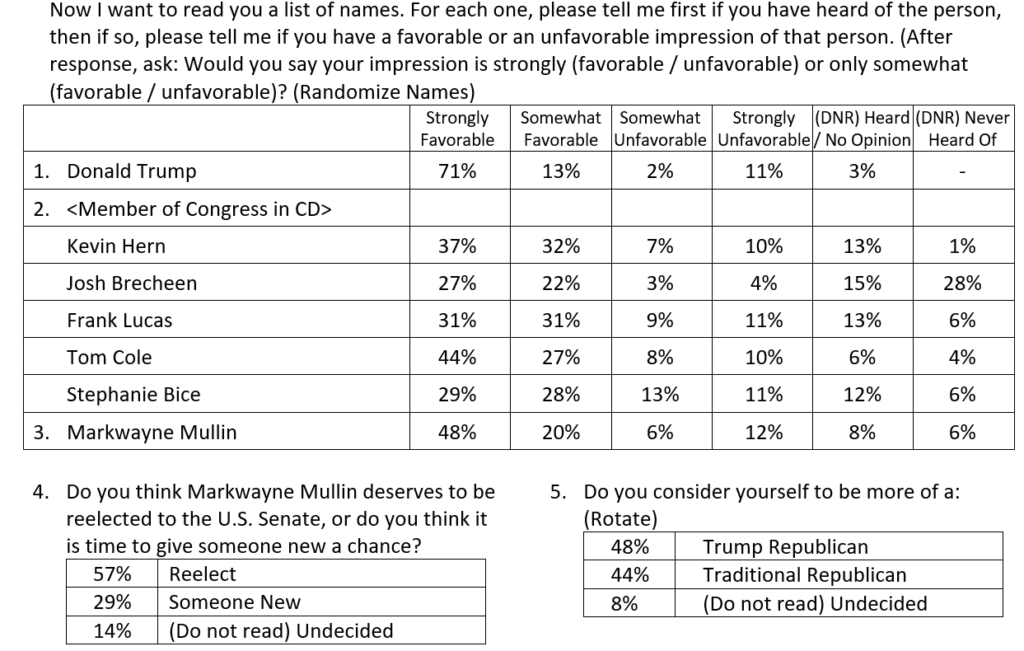

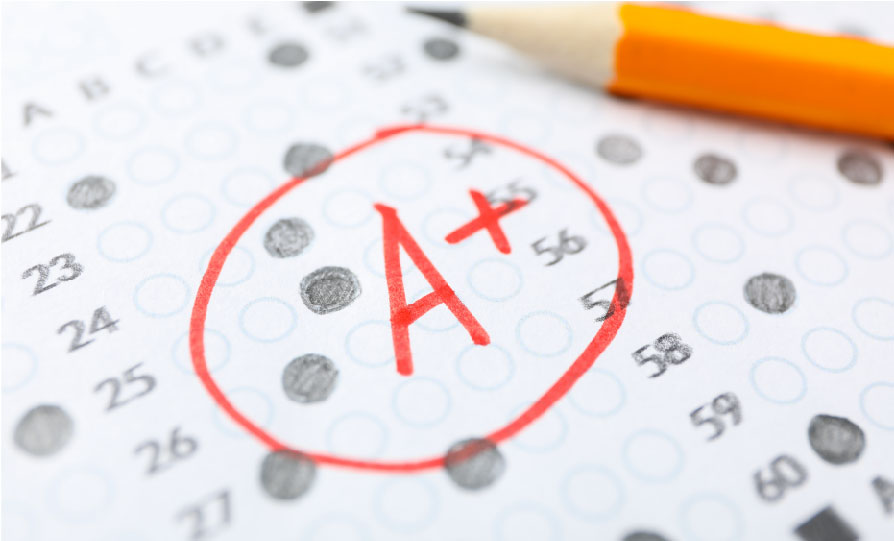

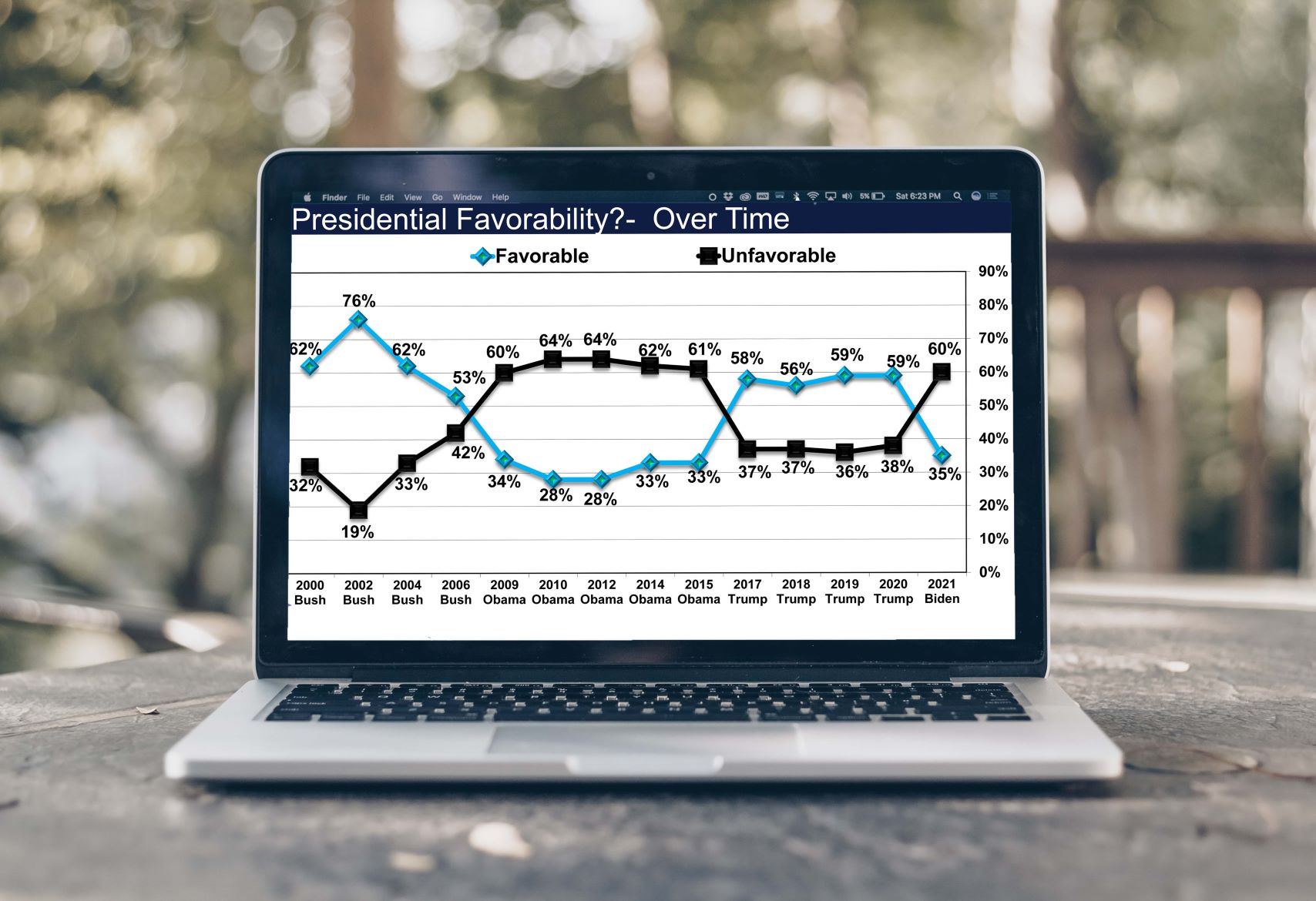
Recent Comments